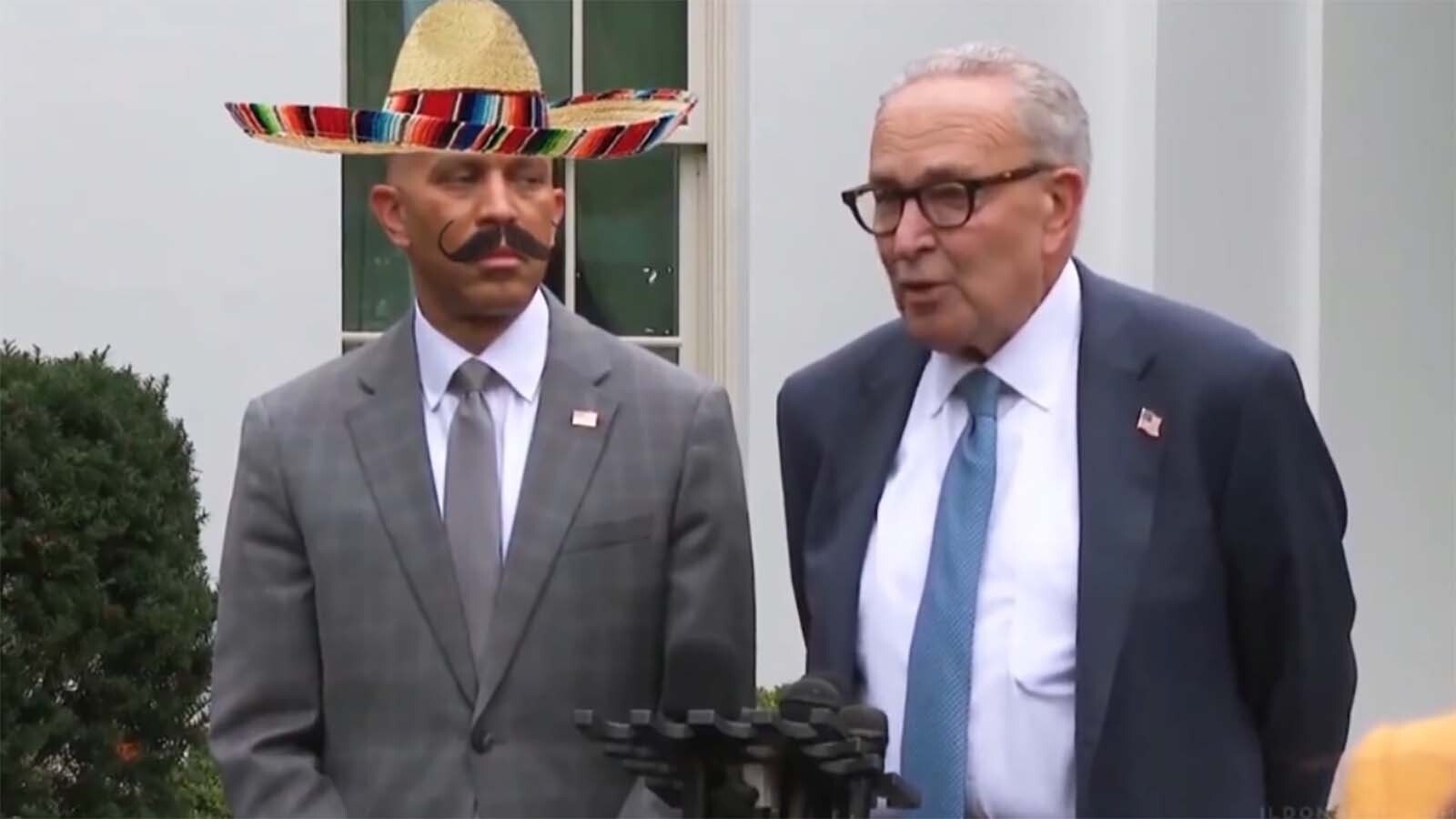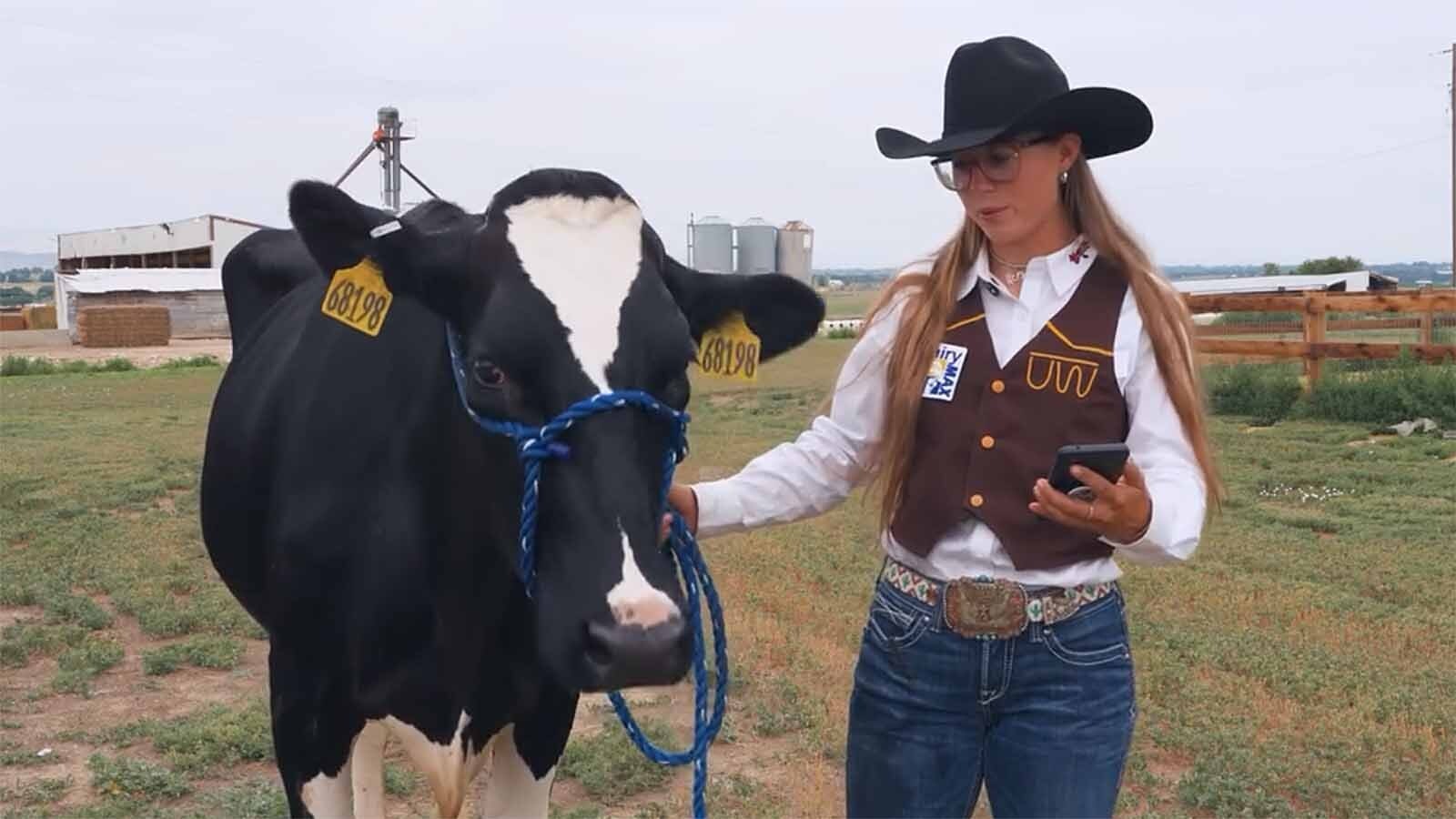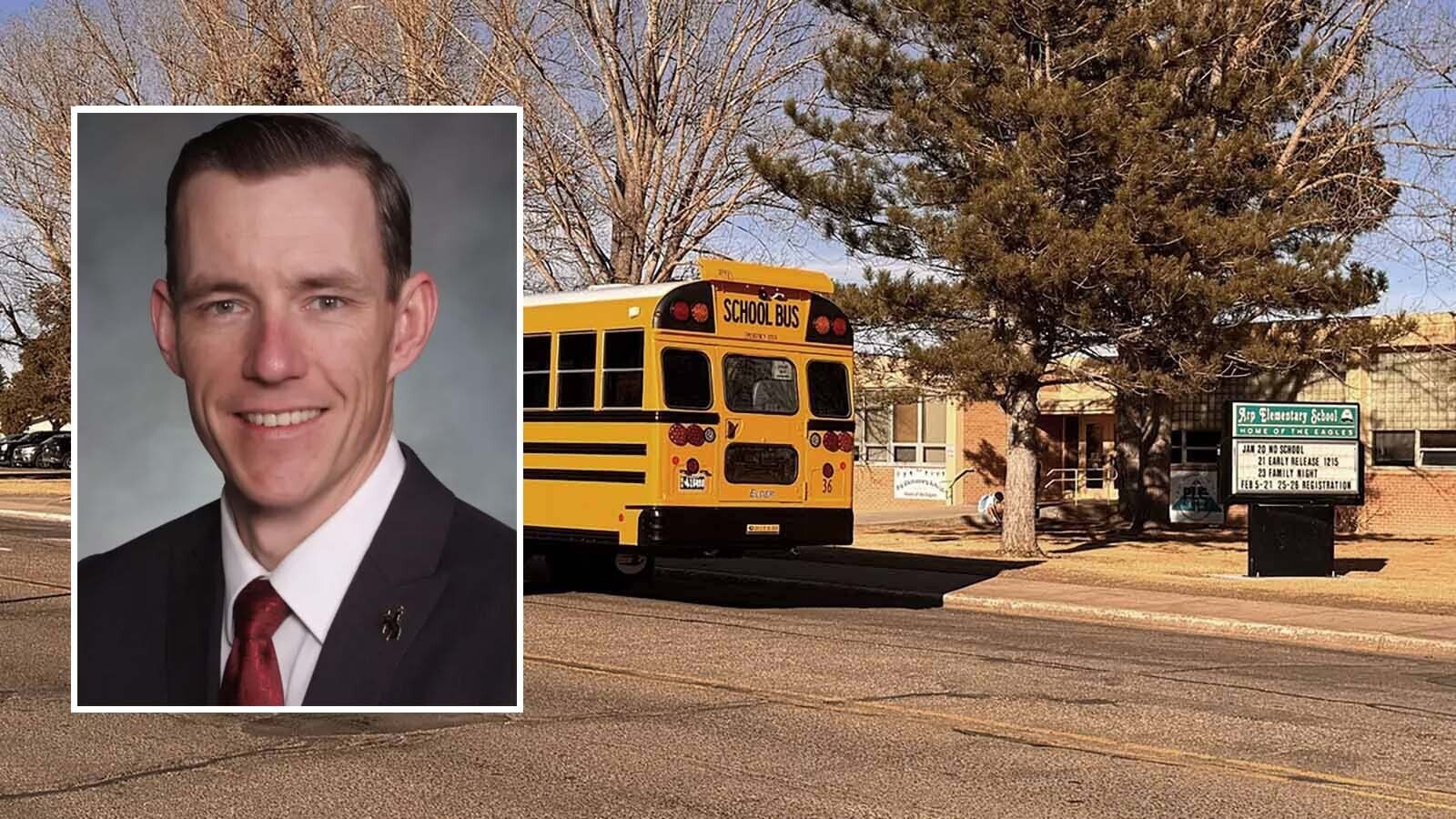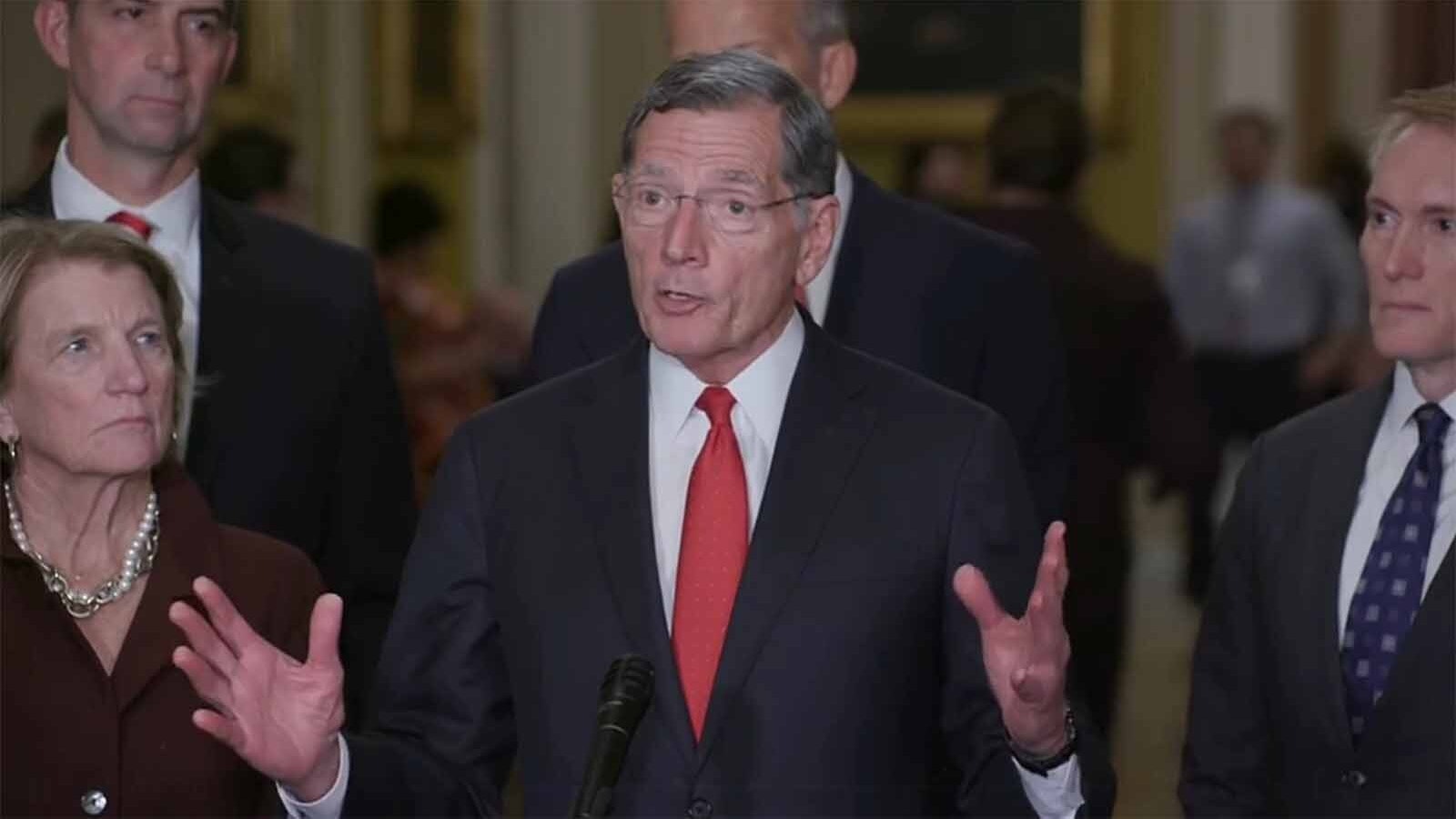A handful of state House representatives who control Wyoming’s spending wore red dress coats to their Monday committee meeting in Gillette to make a statement that the state is heading toward a projected deficit of nearly $700 million in the next five years.
House Appropriations Chair John Bear, R-Gillette, was among the four House Appropriations members who wore bright red dress coats to the Monday meeting.
He characterized the move as a visual alarm to warn of a concerning state budget projection the Legislative Service Office (LSO) published in April.
Republican Reps. Scott Smith (Lingle), Abby Angelos (Gillette) and Bill Allemand (Casper) also wore red coats Monday.
Republican Reps. Jeremy Haroldson (Wheatland) and Ken Pendergraft (Sheridan) indicated to Cowboy State Daily they would have worn them but missed the memo.
The House committee’s lone Democrat, Rep. Trey Sherwood of Laramie, did not wear a red coat and did not comment on the situation except to say, “I don’t own any red because it is my least favorite color.”
Committee members also had bobblehead versions of themselves and “DOGE” Wyoming ball caps, but these were gifts from Allemand and Smith, respectively, to their fellow committee members and not a public statement, Pendergraft told Cowboy State Daily.
The Projected Deficit
The April 2025 long-term revenue-expenditure forecast says Wyoming’s general fund, or main account, is projected to have a $10 million deficit by the 2029-2030 biennium. And the state’s school foundation program account – which powers public schools – is projected to fall into a $686 million deficit by that biennium.
The Wyoming Constitution forbids the state from running on a deficit, which means Wyoming would have to cut spending, raise revenues, pull from its $1.58 billion savings account (which is projected to hold $702 million by 2029), or a combination of all of those.
To Bear, cutting spending is the most important approach, starting with any fraud, waste or abuse, then ineffective programs and other inefficiencies.
Two former House Appropriations members, one of whom Vice-chaired the committee in a past legislature, however, cautioned against overlooking the sweeping revenue cuts the delegates in the red coats backed in the past two years.
Dig In
Bear noted in a text message that Wyoming is “projected to be spending $201 million more than we take in during the next biennium and $696 million in just four years.”
He added that the state’s bond rating from Standard & Poor’s dropped from a triple-A rating in 2017 to a double-A rating in 2020.
“We will likely be downgraded again due to this deficit outlook,” wrote Bear. “Our members want to make the citizens of Wyoming aware of this and wearing red blazers on a regular basis reminds us that we are ‘in the red’ and we must do the hard work of addressing this trend.”
The forecast doesn’t account for the fact that Wyoming lost a court challenge this year against a public-school advocacy group and several school districts, and a judge ordered the state to bolster some public-school services and reevaluate the K-12 funding system, said Bear.
Wyoming is challenging that ruling in its state Supreme Court.
But Those Revenue Cuts
Rep. Lloyd Larsen, R-Lander, who vice- chaired the House Appropriations Committee for the prior legislature, said recent residential property tax cuts are a large driver of the projected deficit on the school account side.
“I applaud them for looking at areas where we’re overspending. That’s fine, that’s their job; we expect them to do that,” he said. “But to (act like) they’re the first committee on earth to do that is flawed.”
Larsen warned against overlooking the significant hits to state revenue that Bear and the others championed into law this year.
For example, 70% of property taxes fund public schools, and the rest fund local governments. Many local leaders, like county commissioners have derided a 25% residential property tax cut enacted this year, saying it will gouge important services they offer.
The original bill had offered to “backfill” those cuts by pulling from the state’s general fund, but that measure failed in the state Senate during this year’s winter lawmaking session.
“The question was, if you’re going to cut property tax, fine. If you think that schools and local governments can handle that,” said Larsen. “But if not, what are you going to do?”
Since they’re tied to home values, residential property taxes are fluid. But LSO estimated in a fiscal note that the school foundation fund would take an $89.5 million hit per year in 2026 and 2027 – totaling $179 million over those two years.
(That estimate is rough: it was compiled when the bill still proposed to cut 25% off the property taxes tied to the first $2 million in residents’ home values, though the version enacted cuts 25% off property taxes tied to the first $1 million in those home values. Insofar as some Wyoming homes exceed $1 million in value, the revenue impact from those homes would be less than projected.)
The legislature in 2024 also passed a property tax exemption for some long-term homeowners and a property tax increase cap.
LSO anticipated a $3.78 million hit to the school foundation account from the exemption and called the revenue decrease from the cap “indeterminable” due to fluid factors.
The rush of property tax reform legislation followed a post-COVID housing market hike, when numerous lawmakers campaigned on a promise of increasing property taxes.
So many lawmakers had different approaches — and multiple, differing bills passed at once.
“We just kept throwing crap against the wall” rather than taking a wholesale approach, said Larsen.
The Highwayman
Another self-inflicted revenue gouge of 2025, said Larsen, was the bill transferring $140 million per biennium from the general fund to the Wyoming Department of Transportation, to pay for road construction.
Also, Wyoming’s new school-choice program — which is currently under a court challenge — has appropriated $50 million to fund private and homeschooling programs for students who opt out of public schools.
The exact monetary impact of the program is unclear — as only time will tell how many students left public school to take advantage of the $7,000 in annual education stipends the program offers, and how many were already in a non-public school setting.
Red Coats
Former House Rep. Clark Stith, who served Rock Springs and served on the appropriations committee for the prior legislature, was blunter than Larsen, in his Tuesday interview.
“No one’s going to feel it for a while, but (the school account) is on a long-term downward trajectory because of the residential property tax cut,” said Stith. “Everything else looks to be pretty much in order.”
The savings account will ease the blow for the first couple years, but the state could be in trouble in four years, said Stith.
“Yeah, I think the Freedom Caucus members in the House are showing themselves to be redcoats, who are not committed to Wyoming’s schools,” said Stith. “Well, that’s not a surprise.”
Stith was referring to Bear's status as a former leader and current member of the Wyoming Freedom Caucus, a group of Republican lawmakers who have generally pursued tax cuts.
Bear in a follow-up text to Cowboy State Daily said not all delegates in red coats are Freedom Caucus members, but he did not respond to a question about which are not.
Giving It Back To The People
Bear, conversely, said cutting residential property taxes will stimulate economic growth in the long run and help the state.
“The truth is that when money is put back into the hands of taxpayers, it is added to our economy and generates revenue for the state/schools over and over,” he said.
As to the school choice program, it’s not much relatively speaking, said Bear, noting that the total cost of the program is between $70 million and $80 million in its first couple years.
“There is a reason Clark Stith no longer represents the people of (Rock Springs),” said Bear, pointing to Stith’s 2024 primary election loss. Bear noted that teachers and school staffers enjoy the benefits of the property taxes as well. “So we gave a raise to the most important people in public education.”
In The Red
To Pendergraft, state spending is more problematic than revenue gouges. He said the red coats are to warn of soon being “in the red” from overspending.
“We don’t have a revenue problem,” he said. “We have a spending problem.”
If he could cut somewhere, said Pendergraft, he’d start with the Wyoming Business Council, which the legislature budgeted for nearly $87 million for the 2024-2025 biennium.
“And every agency I talk to, the first thing they say is, ‘We don’t have enough — we don’t have enough — we need more,’” said Pendergraft. But it’s time to “get back to the basics (and determine) what is the proper role of government,” he added.
Clair McFarland can be reached at clair@cowboystatedaily.com.





